To upright a load, precautions must be taken to avoid overloading any equipment, whether crane(s) or rigging gear. In this workshop we are given the load's weight of 27,000 lbs. The available lifting points have been designed into the load (concrete column with steel anchored lugs). The precast column must be picked and turned in midair. (If the column was lifted only at the double-lug end, we might cause excessive bending and buckling.)
The first step is to determine the distribution of weight. When the column is suspended in a horizontal position, how much will be carried by the main hoist and how much by the auxiliary hoist? After we determine the load at each hoist, then we can select the rigging which has sufficient rated capacity to meet or exceed the anticipated loading.
Use Panel 2 of the Journeyman Rigger's Reference Card to solve the questions relating to weight distribution. Then use Panel 1 to choose the proper wire rope slings to be attached to the main hoist and auxiliary hoist.
Workshop Assignment
Determine the following:
- Load to Main Hoist Block
- Load to Auxiliary Hoist Block
- Sling selection for Auxiliary Hoist
- When initially lifting the column off the ground, which hoist should lift first to avoid buckling the column?
The answers to this workshop can be found below.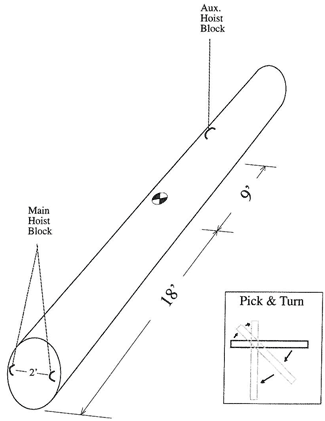
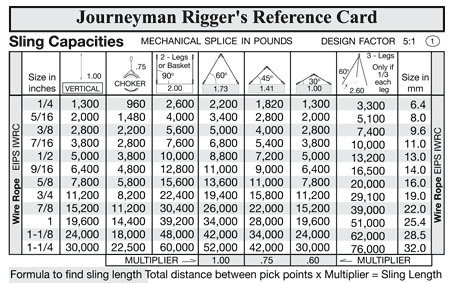
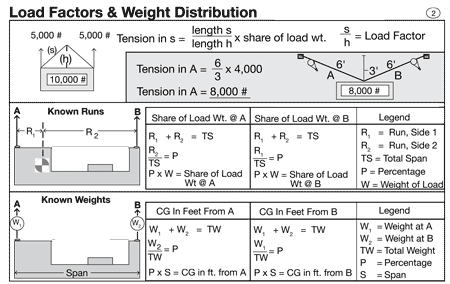
Happy trails to all my crane and rigging friends,
Mike Parnell
ITI-Field Services
P.S. This article was originally published in The Professional Rigger Newsletter.
Answers:
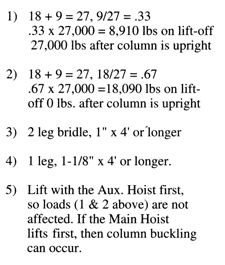



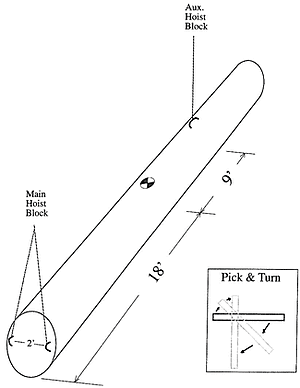
COMMENTS